by Charles Lear
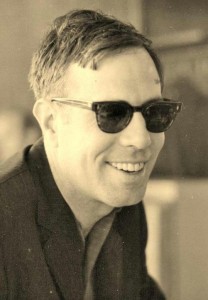 Among the early flying saucer investigators who stumbled their way through the mystery in the late 1940s and early 50s, there were some fascinating characters. Imagine being able to meet and discuss flying saucers with the likes of Donald E. Keyhoe, Edward J. Ruppelt, Frank Scully, Albert Bender or Gray Barker. A young man who did was James Moseley, who had more than a passing interest in the subject. With no prior writing experience or credentials, he convinced the most prominent people in the field to sit with him for interviews for a book he’d set out to write. He never published the book but found a place for himself in the world of flying saucers and saucerers where he’d remain for the rest of his life.
Among the early flying saucer investigators who stumbled their way through the mystery in the late 1940s and early 50s, there were some fascinating characters. Imagine being able to meet and discuss flying saucers with the likes of Donald E. Keyhoe, Edward J. Ruppelt, Frank Scully, Albert Bender or Gray Barker. A young man who did was James Moseley, who had more than a passing interest in the subject. With no prior writing experience or credentials, he convinced the most prominent people in the field to sit with him for interviews for a book he’d set out to write. He never published the book but found a place for himself in the world of flying saucers and saucerers where he’d remain for the rest of his life.
In 1950, James Moseley was a young man with a trust fund who had just quit Princeton University. He had enough money that he didn’t have to do anything productive but he quickly became bored with “recreational drinking” and skirt chasing. According to him, in his 2002 autobiography, “Shockingly Close to the Truth: Confessions of a Grave-Robbing UFOlogist”, he sought a more satisfying way to fill his days and decided on travel and exploration. He got in contact with a well-known Italian explorer, Attilio Gatti, and paid to tag along with him to Africa. After his return, he approached an American explorer, Ken Krippine. Krippine was a regular contributor to Argosy magazine and lectured on his travels as well.
Moseley lived in Fort Lee, New Jersey, and when Krippine came to New York City in 1953, Moseley was able to meet with him. Krippine quickly realized that he’d found a good thing in Moseley and made use of him as a chauffer and a source of funds. After becoming aware that he was being used, Moseley made Krippine sign an agreement. It stated that when it came time to go on his expedition, in this case, Peru, Moseley’s way was paid in full.
Read more →
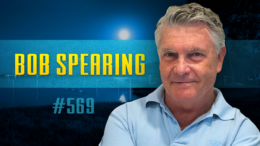 Guest, Bob Spearing to discuss his role investigating UFOs, some interesting cases, and the history of people reporting balls of light over the centuries. He also discusses the types of craft that have been reported, including some strange ones.
Guest, Bob Spearing to discuss his role investigating UFOs, some interesting cases, and the history of people reporting balls of light over the centuries. He also discusses the types of craft that have been reported, including some strange ones.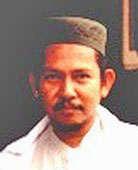 According to an
According to an 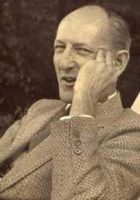 Of all the private organizations devoted to UFO investigation, the National Investigations Committee on Aerial Phenomena was arguably the most ambitious and tenacious. This was driven in large part by its director, Donald Keyhoe. Keyhoe held the beliefs that UFOs are extraterrestrial and that the U.S. Government, particularly the Air Force, was keeping information from the public that could possibly prove the ET hypothesis. As effective as NICAP was at hounding the Air Force and convincing many in the U.S. Congress that UFOs were deserving of scientific study, there are indications that the CIA was involved in both the beginning and the end of the organization.
Of all the private organizations devoted to UFO investigation, the National Investigations Committee on Aerial Phenomena was arguably the most ambitious and tenacious. This was driven in large part by its director, Donald Keyhoe. Keyhoe held the beliefs that UFOs are extraterrestrial and that the U.S. Government, particularly the Air Force, was keeping information from the public that could possibly prove the ET hypothesis. As effective as NICAP was at hounding the Air Force and convincing many in the U.S. Congress that UFOs were deserving of scientific study, there are indications that the CIA was involved in both the beginning and the end of the organization. Todd Zechel wrote about the CIA – NICAP connection in the January 1979 issue of
Todd Zechel wrote about the CIA – NICAP connection in the January 1979 issue of 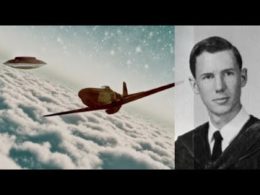 There is a classic Project Blue Book case known as,
There is a classic Project Blue Book case known as,  Among the early flying saucer investigators who stumbled their way through the mystery in the late 1940s and early 50s, there were some fascinating characters. Imagine being able to meet and discuss flying saucers with the likes of Donald E. Keyhoe, Edward J. Ruppelt, Frank Scully, Albert Bender or Gray Barker. A young man who did was James Moseley, who had more than a passing interest in the subject. With no prior writing experience or credentials, he convinced the most prominent people in the field to sit with him for interviews for a book he’d set out to write. He never published the book but found a place for himself in the world of flying saucers and saucerers where he’d remain for the rest of his life.
Among the early flying saucer investigators who stumbled their way through the mystery in the late 1940s and early 50s, there were some fascinating characters. Imagine being able to meet and discuss flying saucers with the likes of Donald E. Keyhoe, Edward J. Ruppelt, Frank Scully, Albert Bender or Gray Barker. A young man who did was James Moseley, who had more than a passing interest in the subject. With no prior writing experience or credentials, he convinced the most prominent people in the field to sit with him for interviews for a book he’d set out to write. He never published the book but found a place for himself in the world of flying saucers and saucerers where he’d remain for the rest of his life.